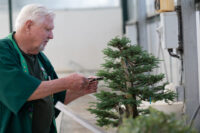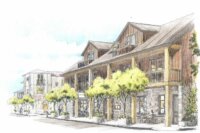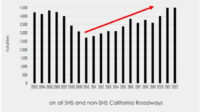They have been too busy to put up a sign. So if you didn’t know better, the company located in a non-descript business park off Eighth Street East could be importing trinkets for wine country tourists. But behind door No. 3 is the headquarters of Vode Lighting. Its small, busy design studio leads to a cavernous warehouse stocked with lighting elements that may one day illuminate some of the finest buildings in the world.
Established less than a year ago, Vode Lighting is leading a new trend in architectural lighting with the creation of lights for commercial applications that are energy-efficient and recyclable, while offering a myriad of configurations based on one simple design.
“Vode is about creating illuminating instruments that can be seamlessly integrated into the architectural elements to achieve balance of form and function,” said Scott Yu, head of product design.
Leading Yu’s creative efforts is the president of Vode, Tom Warton, who brings over a decade of commercial lighting experience to the firm. The other member of the team is George Mieling, who heads up company operations and has held top level executive positions at industrial corporations in the U.S. and Europe.
The three men left established careers to take the risk of spearheading a new direction in commercial lighting that currently rests on the success of the firm’s first product, called the Modular Light Rail System.
The aerodynamically sleek lighting instrument illustrates Vode’s commitment to providing commercial lighting that offers architects the ability to illuminate interior spaces with simplicity, flexibility, and with materials in harmony with the “building green” philosophy.
“A design that is environmentally harmful is an oxymoron; equally, a ‘green’ product that is not attractive has only limited appeal,” said Yu.
Reflective of Yu’s background in automotive design, the Vode light has a sleek, aerodynamic style and a minimalist structure allowing it to blend into any décor with pleasing invisibility while offering soft, even illumination.
“A good design features no extraneous elements – the simpler the better,” explains Yu. “That’s why architects are attracted to our lighting. We light the space while not distracting from the design of the building. Our lights are integrated to the aesthetic vision of the architect and the functional needs of the space.”
Another unique component of the design is the modular system. The Vode light rail system is built as attachable lighting units, allowing an architect to use the light to illuminate a long airport concourse or as separate illuminating components above small work stations. “The modular design makes it so easy for architects,” said Mieling. “Plus the modular components are shipped in compact tubes for simple on-site assembly, which keeps materials to a minimum while reducing energy, limiting waste and making for easy recycling.”
The use of sustainable, renewable materials is a fundamental part of Vode’s “Building Green” design approach. Made mostly of recycled aluminum, the PVC-free lighting system also uses energy-efficient fluorescent lamps. Warton believes architects and their clients value sustainability, but products and design firms still have to perform.
From the reaction of architects, Vode Lighting is performing. Major architectural firms from coast to coast are integrating the company’s lighting instruments into their blueprints. Airports, corporate offices and academic centers could soon be lit with the lighting instruments designed by Sonoma’s Vode Lighting.
Sonoma firm sheds light on design trends
More from NewsMore posts in News »




